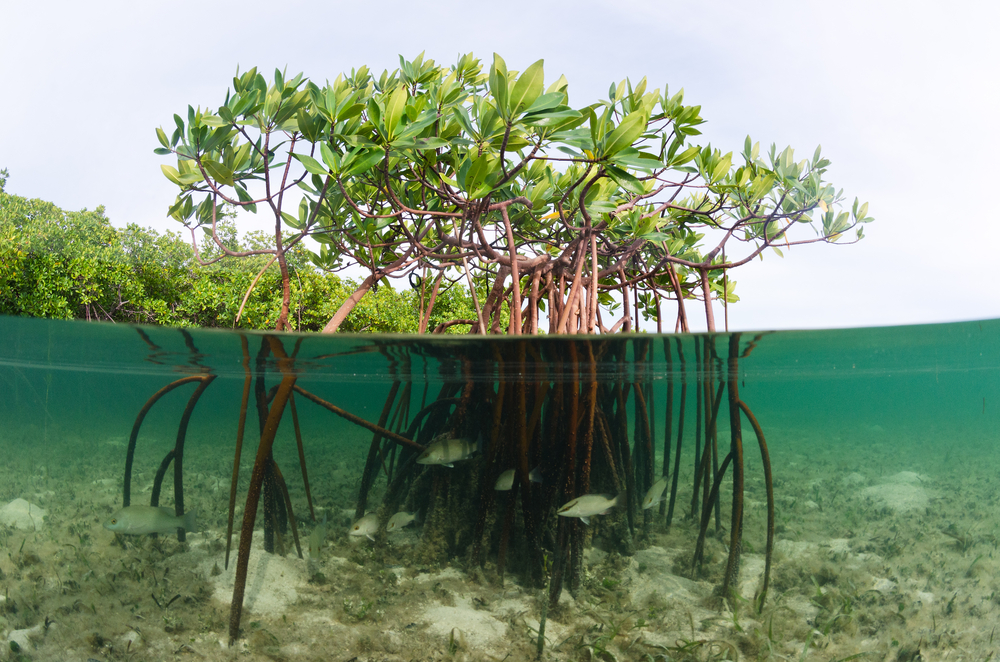
What are Ecotone
Ecotone is known to be a transitional area, which exists between two ecosystems or two different communities like grassland and forest. Ecotones are known to be of great environmental importance because they mainly contain those species that are not found in the overlying communities. They are home to many fauna and flora as they have an area transition between two biomes and ecosystems. They might also exist in a small pocket or broad belt, such as a forest clearing, where two local communities merge together.
To know about biomes in detail you can open the following link: https://thecliment.com/uncovering-the-beauty-of-earths-major-biomes/
Some of the very well-known examples of ecotones are marshlands between wet and dry ecosystems, mangrove forests between marine and terrestrial ecosystems, grasslands between forest and desert, and estuaries between freshwater and saltwater. Mountain ranges can also form ecotones due to the changes in the climatic conditions on the slopes. Ecotone can also be found in the areas where one water body meets with another water body for example, estuaries and lagoons, or at the boundary line between land and water like marshes.
Freshwater and Marine Ecotones
On the basis of the presence of large plants that upsurge from the roots attached to the submerged substrate, both of these ecotones are differentiated, and also because of this reason, they are found in areas where plenty of light is available at the bottom of the basin to permit growth.
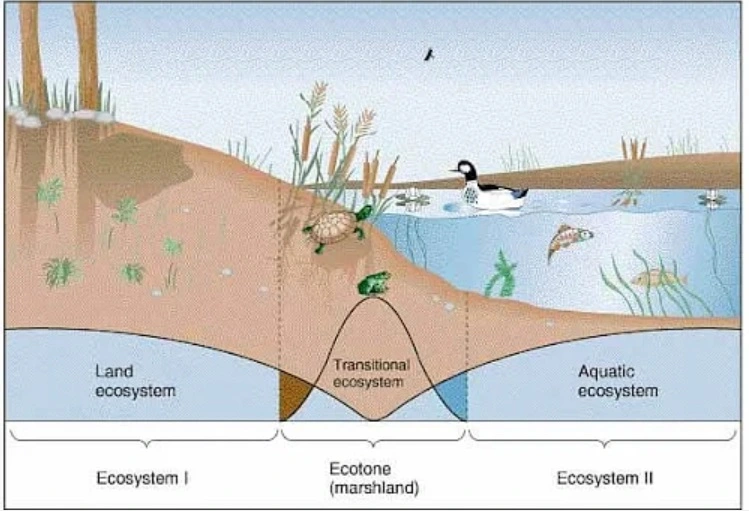
Characteristics of Ecotones
Some of the major characteristics of ecotones are as follows:
- These can be natural or man-made. For example agricultural fields and forest (it is a man-made one).
- They may differ in size from wide to narrow.
- They are also known to be tension zones as they show conditions intermediate to the bordering ecosystems.
- They may also comprise fauna and flora species that are totally different from those found in the bordering systems.
Importance of Ecotones
Ecotones have many significant roles in the ecosystem, some of which are listed below:
- Ecotones show greater dissimilarity in an organism.
- They provide a contented habitat for different organisms for example, by providing space for nesting for those animals who wander around in search of food or a place for habitat.
- Ecotones act as a mode of transportation or bridge for gene flow from one population to another as they have larger genetic diversity.
- They are known to be the buffer zone because of that they offer protection to the bordering of an ecosystem from various damages.
- They also show compassion toward global climate change. Climatic changes occur because of the shifting of boundaries between ecosystems.
Ecoline
The zone in which there is a constant change from one ecosystem to another in the absence of a sharp boundary between the two ecosystems in terms of species composition is called an ecoline.
The flow of an ecoline occurs across the environmental slope, like gradual change in abiotic factors such as temperature, altitude, depth, salinity, and many more.
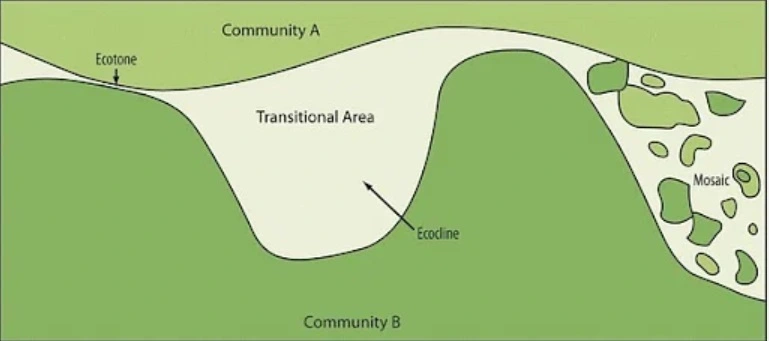
What is the Edge Effect?
When someone talks about ecotones, discussing the edge effect is inevitable. The accurate meaning of the term “edge” is the outside limit of a surface or an area. In the scientific context, the edge effect relates to the outer limit of a particular ecosystem. However, when talking about ecotones, it suggests that there are two ecosystems to be considered.
As mentioned above, an ecotone represents the region between two ecosystems. Therefore, we observe a diversity of fauna and flora species and an increased population here. This phenomenon is called the edge effect. The effect caused by the different characteristics of the two adjacent ecosystems causes such changes. One of the best examples of the edge effect is mangroves. Mangrove vegetation helps animal and plant species that are adapted to live both on water and land.
Formation of Ecotones
When there is any type of physical environmental change, in that case, they may produce shrill boundaries, as an example of the boundary between areas of forest and cleared land. Mostly mountain ranges are accountable for the formation of such ecotones because they show a wide diversity of climatic conditions experienced on their slope ranges. A terrain acts as a disruptive boundary which provides a boundary between species.
Why are Ecotones Special?
Ecotones, in simple terms, are intermediate lands, which is why they provide a valuable understanding and information regarding the evolution of the topography. Moreover, such a region is also very vulnerable to climate- and human-induced changes. These changes result in adjustments related to the biodiversity, functioning, and structure of the thriving flora and fauna.
Not only this, but ecotones are also very exceptional when it comes to species diversity. The transitioning region claims species richness and intricate biodiversity. This is because they contain plants and animal species from both the neighboring ecosystems. Furthermore, in ecotones, certain other species that are specially adapted for living in this zone will also flourish. Such species are often not found in the nearest ecosystems. Therefore, the difference produced in such areas contributes to increased biodiversity.
What is the Significance of Ecotones?
Ecotones are the biological correspondents of buffer states. They act as buffer regions when catastrophic conditions hit and protect the adjacent ecosystem from any potential dangers. For example, if a tsunami hits a coastal area, it’s usually the mangrove vegetation that acts as the shock absorber. It prevents a huge amount of danger from penetrating into the terrestrial region.
Furthermore, ecotones act as biodiversity hotspots between two ecosystems. As such, this area is of high scientific and environmental importance. Because this region boundaries two well-defined ecosystems, it encourages gene flow from one community to another, thereby giving rise to interesting differences. As such, ecotones act as evolutionary significance for researchers.
Sometimes if you visit a coast don’t forget to make a note of the biodiversity flourishing there. You can find fish only in the sea and terrestrial animals only on the land. However, in the submerging area of these two, you will find a few fish, some terrestrial animals, and some other unique fauna and flora that can survive both on land and water. Thus, ecotones not only promote biodiversity but also characterize a region that is even richer than its neighbors.
Ecotone Examples
Forest-Grassland: The change from a forest to a grassland habitat is a well-known example of an ecotone. The tree composition of the forest inclines to shift slowly as temperature and rainfall conditions change. The forest will brusquely give way to the vast spaces of a grassland.
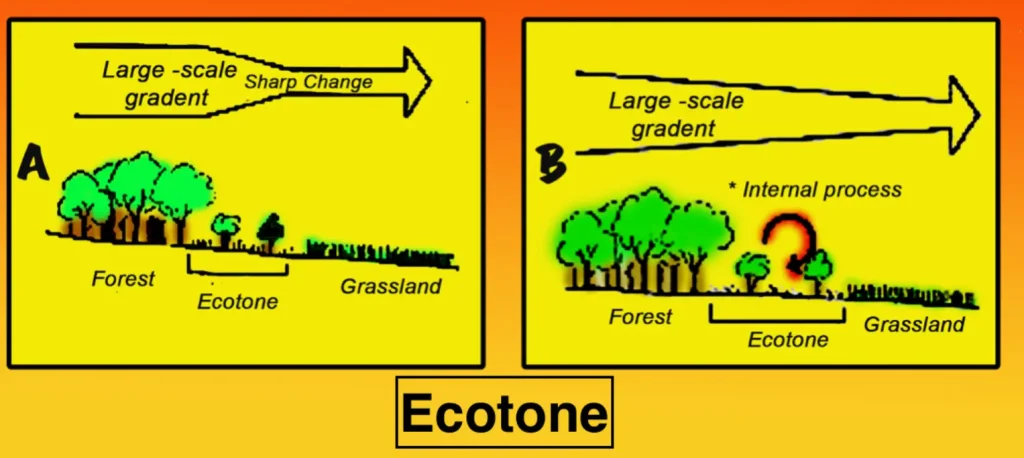
Floodplains: Another example is a floodplain, which signifies a transition from terrestrial to aquatic ecosystems. The portion of the bank where these two ecosystems meet is one of the most important ecotones of nature.
Conclusion
Ecotone is a zone of transition between two biological communities, a place at which the two communities come together and direct their efforts. This zone may be large or small in scope, and it may be local for instance, the area between a field and a wooded area, or regional in scope. It may also be wide or narrow in scope. It can display itself on the ground in the form of a progressive mixture of different communities across a vast area, or it may show itself as a hard boundary line unraveling the two communities, depending on the circumstances.
You can find some informative papers on ecotone on the following link: https://karkgroup.org/index/our-projects/ecological-gradients/
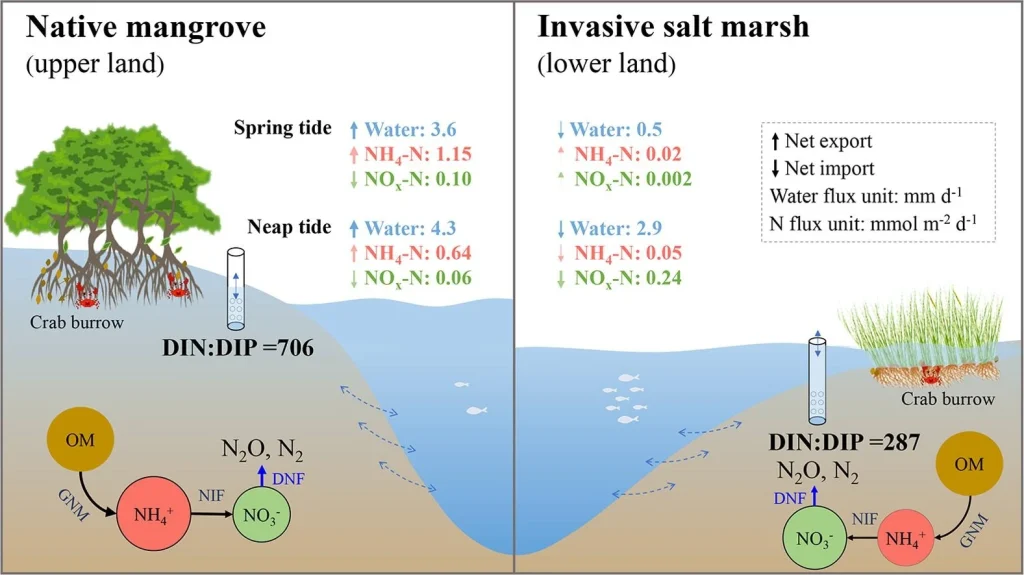
 The Climent Respect your roots, Protect your planet
The Climent Respect your roots, Protect your planet
